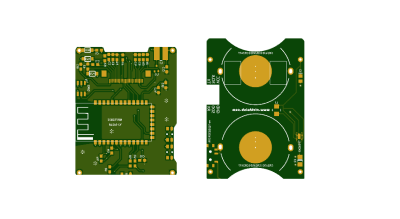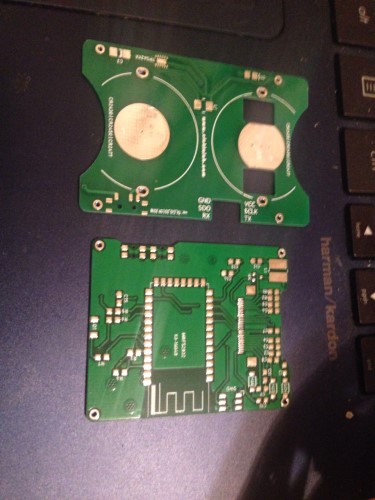💬 EFEKTA Temp&Hum sensor(ver. nRF52 )+E-Ink display
-
-
I like that project because it uses the energy efficient nRF52 and it uses ePaper which connects it directly without an adiitional HAT (cheaper).
I would lie to join that project but it would be grat if you could share the BOM, the PCB files (Eagle and Gerber) and also the code (github)?
Where do/dis you order the PCB's? -
I watch this too...
-
I like that project because it uses the energy efficient nRF52 and it uses ePaper which connects it directly without an adiitional HAT (cheaper).
I would lie to join that project but it would be grat if you could share the BOM, the PCB files (Eagle and Gerber) and also the code (github)?
Where do/dis you order the PCB's?@heinzv
I think I need two more weeks for all the tests. Now waiting for the PCB for the tests. Of course there are huge opportunities. An old sketch which occupied 99% on atmega328 here is 5%. The possibilities are great. After the successful test will be available: to order the PCB, ready device, BOM and test the software. Now spread unverified gerber files or code does not see the point, something else will probably be changed. At the moment I'm generally looking at the concept of the device itself. I would like to add a few more sensors ... but let's see, maybe I'll implement the ideas on another device. -
@berkseo I gave it at least one more like. Fo me it is one of the most interesting projects! With the Atmega328, we are on a dead end and this is the next step we have to go.
I'm not just interested in the PCB and the code but also how you integrate/mount the "plain" epaper with the "foil-connector" which is much cheaper such as 5.99us$ (see below)
So I'm looking forward when the stuff is available. That is exactly what I'm trying to achive since a long time! -
are you satisfied with the nRF52xx and does it work properly? I hope sometime we get the project infos to make some sensors too :-)
I'm satisfied, it work perfectly. I found ready-made modules that can be used by every user without learning, in the Arduino IDE, this was my main task. Now the self-made prototype is on testing, PCB ordered in production. After some time, the development will be available.

-
@berkseo any chance you can provide a brief feedback?
What is your status on the software side?@jeti said in 💬 Temperature and humidity sensor(ver.NRF52832)+E-Ink display:
any chance you can provide a brief feedback?
What is your status on the software side?For nrf52832 was tested software developed for the atmega328. Need to alter the fonts and graphics, to improve, because this chip have more opportunities. This is not difficult. There will be an update soon.
-
@jeti said in 💬 Temperature and humidity sensor(ver.NRF52832)+E-Ink display:
any chance you can provide a brief feedback?
What is your status on the software side?For nrf52832 was tested software developed for the atmega328. Need to alter the fonts and graphics, to improve, because this chip have more opportunities. This is not difficult. There will be an update soon.
-
update,
https://www.youtube.com/watch?v=FNdqroZxFR0It remains a bit to fix the program(improve graphics), as the demo uses software from the version on atmega328
-
update,
https://www.youtube.com/watch?v=FNdqroZxFR0It remains a bit to fix the program(improve graphics), as the demo uses software from the version on atmega328
-
@berkseo awesome! Great work!
One question: the high temperature is a result of testing? So with a long enough sleep time the temp will be accurate?@jeti said in 💬 EFEKTA Temp&Hum sensor(ver. nRF52832 )+E-Ink display:
One question: the high temperature is a result of testing? So with a long enough sleep time the temp will be accurate?
Don't quite understand the question. The chip is not heated. No matter how much the device sleeps, the temperature sensor also sleeps. A digital temperature and humidity sensor is used.

